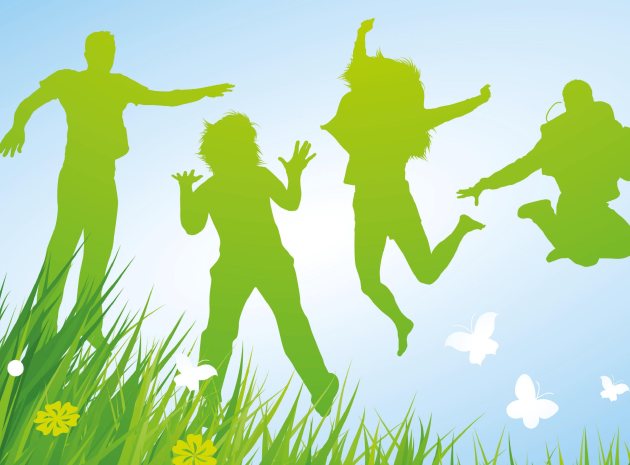Primary schools seem to have ‘got it’; they see that being outside and having daily contact with nature contributes to both the physical and mental health of their pupils. Added to this, they are able to assess just how much more their youngsters achieve through learning outside – it’s no wonder, really, that they spend time making the most of their grounds.
So why does this often seem to stop in secondary schools? Do we seriously believe children over 11 should suddenly put an end to ‘playing’, and that there is no longer any value in taking lessons outdoors? Or could it simply be that, in these days of stretched budgets, the prospect of making outside spaces appealing and interactive seems lovely in theory, but unrealistic in practice?
An invitation to play
The truth is, there are ways we can ensure that our secondary school grounds are adding value to our students’ education, without breaking the bank. Let’s start with play: positive play experiences can lead to improved mental health and wellbeing, social skills, increased creativity, resilience and confidence for young people of all ages, so it really does matter. At the same time, though, it’s fair to say that a reluctance to be seen as being ‘childish’ in front of their peers can hinder pre-teens and teenagers from fully expressing their natural, inner playfulness. Here are a few ideas for secondary school grounds that we know make a difference:
• Providing seating and shelter in varied locations.
• Breaking up large spaces into smaller areas.
• Varying topography, colour and materials used.
• Planting more trees, shrubs and flowers for interest and shelter.
• Having a wider choice of activities and open-ended use of structures.
• Providing walking paths and routes for pleasure.
• Doing more than just allowing pupils to play; encouraging them to do so.
Classrooms without walls
Fortunately, many of the features that enable play also benefit learning outside, so working cleverly, you can manage both learning and play provision with a few simple changes:
• Seating needs to be away from indoor classes, so as not to disturb lessons, and near to where your teaching resources are located. Simple logs or wooden benches arranged in horseshoes or circles (not in long rows) will enable discussion and interaction.
• Shade and shelter will allow the space to be used throughout the year – a tarpaulin makes a good temporary measure.
• Large open spaces are not just needed for PE and play, they can be used for firing rockets, creating stop-motion animation, raising heart rates through exercise and much more.
• With a variety of topography and materials comes more opportunities for learning. Investigate gradients and forces, research materials used in construction or look at the patterns of paviours.
• Plan planted areas, and use them to calculate the costs of growing your own crops and the air miles saved compared to those in a supermarket, learn how photosynthesis works by blocking light from the grass, and look at how writers describe trees in different ways for different audiences.
• As with play give permission for lessons outdoors, this time for teachers as well as pupils.
Working with students to develop your grounds is also a great learning opportunity. Surveying, developing design ideas, calculating costs and actually helping to make the changes encourages young people to develop new skills and knowledge as well as introducing them to career ideas they may not previously have considered. And, as your students start to understand that the outdoors is as important as the indoors, perhaps the message will start to get through to some of those doubting teachers, too.
About the author
Mary Jackson is Learning Through Landscapes’ projects manager and has a background in both secondary teaching and landscape architecture (she is also a co-founder of the International School Grounds Alliance). www.ltl.org.uk









